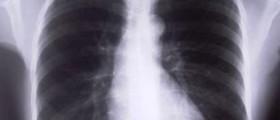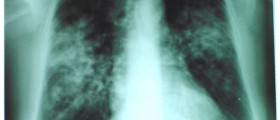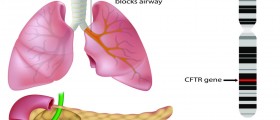
Idiopathic pulmonary fibrosis is a serious, progressive disease which eventually leads to death. It is characterized by replacement of normal lung tissue with non-functional fibrous tissue. The underlying cause of scarring of the lungs remains unknown.
Idiopathic Pulmonary Fibrosis Causes and Risk Factors
It is a mystery why some people develop pulmonary fibrosis and others manage to avoid the condition. Those who end up with the disease may expect their lungs to be severely affected by excess of fibrous tissue. Such scarring is accompanied by lungs stiffening which subsequently interferes in breathing. Namely, the lungs are no longer elastic enough and cannot stretch allowing proper amount of air to reach all the alveoli.
Progression of pulmonary fibrosis can be rapid while sometimes symptoms may intensify over years allowing patients to adapt. The condition is most commonly reported in people between 50 and 70 years of age.
Idiopathic Pulmonary Fibrosis Symptoms and Signs
Pulmonary fibrosis symptoms and signs develop once the lung function becomes seriously jeopardized. Patients complain about chest pain (rarely), cough that is generally dry and decreased tolerance for activity. Shortness of breath during activity, especially if it lasts for months or years and if it starts to occur at rest, is pathognomonic for pulmonary fibrosis.
Diagnosing Idiopathic Pulmonary Fibrosis
After investigating patient's medical history and performing physical exam doctors send their patient to undergo chest X-ray, chest CT scan, bronchoscopy with transbronchial lung biopsy. Furthermore, patients may need to undergo measurement of blood oxygen level, pulmonary function tests and surgical lung biopsy. It is also essential to exclude other potential conditions such as lupus, scleroderma and rheumatoid arthritis.
Idiopathic Pulmonary Fibrosis Treatment
Unfortunately, there is no cure of idiopathic pulmonary fibrosis. The progression of the disease cannot be decelerated. The only way is to help patients deal with symptoms and signs of the disease.
Inflammation of lung tissue and subsequent scarring may be reduced with corticosteroids. Scientist currently experiment with new treatments which may eventually help people suffering from idiopathic pulmonary fibrosis.
Terminal stage of the disease requires oxygen therapy and lung rehabilitation. Finally, when the disease has progressed enough, patients may only survive if they undergo lung transplantation. End Stage Idiopathic Pulmonary Fibrosis
Even though corticosteroids may be efficient in some patients, the disease eventually enters terminal stage. In this stage patients suffer from severe shortness of breath and lack of oxygen.
There are many complications which can develop at any time but are most commonly well-developed in the end stage of the disease. They include chronic hypoxemia (low blood oxygen level), cor pulmonale and pneumothorax. Polycytemia, pulmonary hypertension and respiratory failure are several more characteristic complications of the disease.

















Your thoughts on this
Loading...